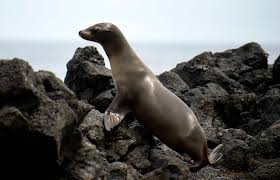By: Sandy Wang
Despite technology becoming more and more advanced nowadays, scientists still don’t really know what the bottom of the ocean looks like. Therefore, a group of college students recruited some “helpers” to dive down and record parts of the ocean floor that have never been seen before. However, these “helpers” aren’t humans, they’re sea lions.
A Ph.D. student at the South Australian Research and Development Institute (Aquatic Sciences) and the University of Adelaide, Nathan Angelakis and his colleagues attached video cameras to four sea lions named Daphne, Phoebe, Iris, and Pasithea. Mr. Angelakis and his colleagues had wanted to find a way to map the aquatic ecosystems off Australia’s southern coast, but using remotely operated vehicles and cameras towed by underwater vessels is expensive and difficult. So they decided to take advantage of Australian sea lions, which often dive 300 feet beneath the surface in search of food.
After receiving consent from marine conservation authorities, Mr. Angelakis and his team glued credit-card-sized patches of synthetic wet suit material onto the sea lions’ backs and heads. Then, they attached cameras and devices that tracked speed and location. All of this was done while the sea lions were under a light sedative that made them groggy.
A few days later, when the sea lions came on shore again, the researchers removed the cameras and reviewed the footage on a laptop. “You get those moments which are really exciting,” Mr. Angelakis said, such as “when the sea lion captures a really big fish or a small shark or it’s wrangling an octopus.”
According to The New York Times, he said that the most exciting scene was recorded by Daphne. “She was taking her pup out to sea, and that’s the first direct evidence that we’ve collected of Australian sea lion mothers teaching or passing on their foraging skills to their pups,” Mr. Angelakis said.
Dan Costa, a professor of Ecology and Evolutionary Biology at the University of California, Santa Cruz, said in a New York Times article that seeing the ocean from a sea lion’s point of view could be essential to saving them.











